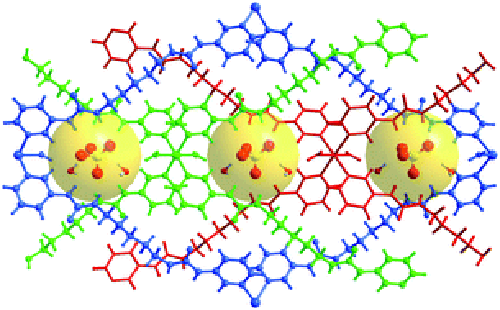There has been considerable interest in the engineering of metal–organic frameworks (or coordination polymers) towards fascinating supramolecular architectures and potential applications in separation, catalysis, non-linear optics, and gas storage, etc. by self-assembly of metal ions with bridging organic linkers. The porosity of MOFs is the key to some specific applications as it enables these materials to include guest molecules of matched dimension, while the size and shape of the pores can be tuned by the judicious choice of metal centers and organic ligands.
However, the final outcome is largely unpredictable because the cavities are often filled up by interpenetration or interweaving when long bridging ligands are used which should lead to larger pores. As a result, the porosity can be significantly reduced or even removed. On the other hand, such interpenetrating species may possess enhanced mechanical strength as separation of the independent rings needs to break chemical bonds. Nevertheless, while porous frameworks of non-interpenetrating systems are numerous, examples of interpenetrating MOFs with remained pores, especially those with well-defined size and shape for special guests, have been relatively rare.

Recently, researchers of the State Key Laboratory for Oxo Synthesis and Selective Oxidation, Lanzhou Institute of Chemical Physics (LICP), CAS, have synthesized three 3-fold parallel interpenetrated metal–organic frameworks by self-assembly of two flexible bis(pyridylurea) ligands with transition metal sulfates.
The interpenetration results in ellipsoidal cavities suitable for encapsulation of sulfate ion selectively. These complexes represent a rational approach to incorporate anion binding motifs within an interpenetrated structure using a building block with long, flexible spacers. In addition, the formation of the sulfate capsules further demonstrates that the alkyl-linked bis(pyridylureas) Ln are excellent building blocks for anion-binding MOFs.
The work was published in CrystEngComm (CrystEngComm, 2010, 12, 2129–2134).
Abstract of the paper published in CrystEngComm

